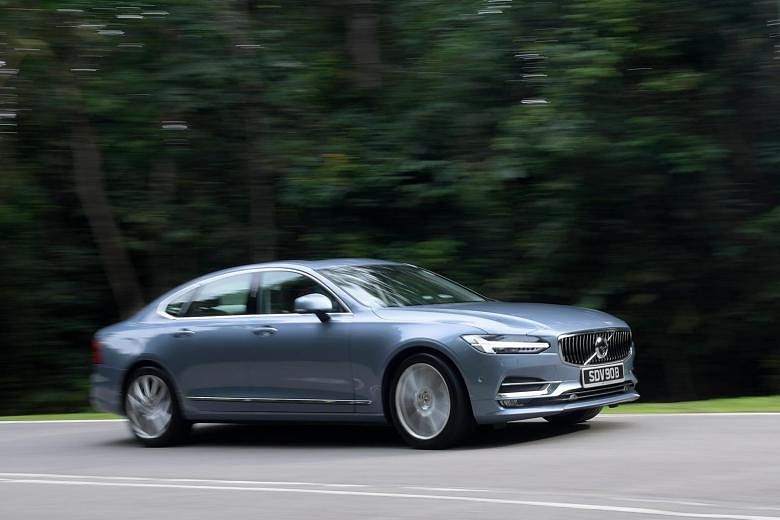On my fourth day in a semi-driverless car, I finally felt comfortable enough to let it stop itself. Before then, I'd allowed the car - a Volvo S90 sedan - to steer around gentle turns, with my hands still on the wheel, and to adjust speed in traffic. By Day 4, I was ready to make a leap into the future.
With the car travelling at 64kmh on a busy road in the Washington suburbs, I pushed a button to activate the driverless mode and moved my foot from the brake and accelerator. The car kept its speed. Soon, a traffic light in the distance turned red and the cars in front of me slowed. For a split second, I prepared to slam on the brake.
There was no need. The cameras and computers in the Volvo recognised that other cars were slowing and smoothly began applying the brake. My car came to a stop behind the Ford ahead of me. I began laughing, even though no one else was in the car, as my anxiety turned to relief.
If you're anything like most people, you're familiar with this anxiety. Almost 80 per cent of Americans fear travelling in a self-driving car, a recent poll found.
When a friend saw me in the Volvo last week and I explained that I was test-driving it for work, she asked which roads I'd be using - so she could avoid them. Another friend asked if driverless cars could be hacked. Colleagues said they feared semi-autonomous cars lulling people into ignoring the road.
Driverless cars tap deep into the human psyche. We want to be in control, or at least to give control to trained professionals, like doctors. We don't want computers to be in charge.
Researchers at Penn and the University of Chicago have conducted some clever experiments that capture this phenomenon. They asked participants to complete tasks (like predicting which business-school applicants would go on to successful careers) and compare their performance with a computer algorithm's. After the computer made a mistake, people were reluctant to use it again. After the people made mistakes, their self-confidence didn't budge.
They rationalised their own imperfections, while obsessing over the computer's shortcomings. It didn't matter that the human beings made more mistakes - a lot more - than the computer.
So it is with driving. Human driving is a public-health scourge. More than 37,000 Americans died in crashes last year, most from human error. In my community, the heartbreaking toll included a mother, father and their teenage son, killed when a speeding car slammed into their car on one of those busy suburban roads. Their teenage daughter survived.
The death count from cars exceeds that from guns. So if you are outraged by guns and want things to change, you should feel the same about car crashes.
Technology creates an opportunity to save lives. Computers don't get drowsy, drunk or distracted by text messages, and they don't have blind spots. Just look at commercial airlines: Automation has helped all but eliminate fatal crashes among American air carriers. The last one happened in 2009.
The technology for semi-driverless cars still isn't good enough or cheap enough. The US$50,000 (S$68,000) Volvo I was driving - like a Tesla I've tried - got confused by unpainted lane lines, for instance, and I had to take over. But the technology is improving rapidly. Within a few years, many cars will have sophisticated crash-avoidance systems.
I expect that we will agonise about using them, out of both legitimate caution and irrational fear. Any driverless crashes will be sensationalised, as has already happened, while we ignore tens of thousands of deaths from human crashes. But I still expect that driving will be revolutionised sooner than many people now understand.
Those researchers at Penn and Chicago also studied the circumstances in which people get comfortable with computer control, and found a theme: When the choice isn't all or nothing - when people have "even a slight amount" of control - they are more open to automation.
That's where driving is headed. The shift will be gradual, not sudden, as Google's chief economist Hal Varian told me. Cars will handle many tasks, while a human driver will have override power. The combination won't be perfect, but it can be much better than the status quo.
My own experience also leads me to think that attitudes may change quickly. One of the more powerful forces in human psychology is known as the familiarity principle. After people have experience with something, they usually feel more positively about it.
I began my short time with the Volvo too nervous to use some features. By the end, I was confident that the car made me safer. Now that I'm back to driving a nearly decade-old Toyota, I miss the things that initially made me anxious.
NYTIMES

